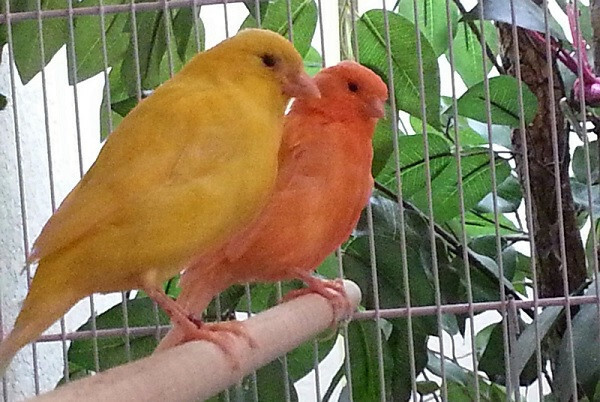Genetic segregation: what it is, characteristics and examples
Living beings adopt two types of basal vital strategies as far as the conception of offspring is concerned: asexual and sexual reproduction.
In asexual reproduction, a cell or a group of cells from a parental organism give rise to another functional individual, genetically equal to its father or mother. This is achieved through bipartition, budding, polyembryony, parthenogenesis, and other complex processes.
On the other hand, in sexual reproduction there are individuals of two genders within a species: males and females. Both produce gametes with half the genetic information of the rest of the cells (they are haploid) and, when put together, they give rise to a zygote that recovers its normal chromosomal number (diploidy). This process is much more expensive than the previous one, but it has a number of advantages that explain evolution in themselves.
In asexual reproduction, all descendants are equal to the parental organism. On the other hand, in the sexual each child has a different genetic makeup, since half of its chromosomes are maternal and the other half are paternal. Due to the crossover, chromosomal permutations, and other processes that take place during meiosis, no child is the same as her sibling (unless they are twins). Next, we tell you what it has to do with
genetic segregation with all these terms.- Related article: "DNA translation: what is it and what are its phases"
What is genetic segregation?
If you have been interested in genetics at some point in your life, it sure sounds familiar to you Gregor mendel. This Augustinian friar, catholic and naturalist, formulated thanks to his experiments with peas (Pisum sativum) the more than well-known Mendel's laws, published between 1865 and 1866. Unfortunately, these documents did not begin to gain prominence in scientific culture until 1900, when Mendel had already passed away.
For its part, the term "genetic segregation" refers to the distribution of genes from parents to children during meiosis, that is, the why of the genome resulting from the offspring after the union of different parents. To exemplify the mechanisms of gene segregation, it will be helpful to briefly go through Mendel's three laws, hence we have made a special mention of his figure.
Since we are going to immerse ourselves in Mendel's world, we must lay a certain foundation. In the first place, it should be noted that we are going to focus on diploid beings, that is, animals and plants that present in their nucleus two sets of homologous chromosomes of each type (2n). If the human being has 46 chromosomes within each cell, 23 come from the mother and 23 from the father.
Within each chromosome, there are a series of ordered DNA sequences that have the information necessary to synthesize proteins or RNA: genes. On the other hand, each gene can have different "forms" that depend on the nucleotide sequence, which are called alleles. Since we have two chromosomes of each type in our cell nuclei, we claim that we also have two alleles for each gene.
A specific allele, according to typical Mendelian genetics, can be dominant (A) or recessive (a). Dominant alleles are those that are expressed independently of their partner (AA or Aa), while recessive alleles require that both alleles be the same for the same gene (aa). For a given gene, an individual can be homozygous dominant (AA), homozygous recessive (aa), or heterozygous (Aa). In the latter case, the dominant trait (A) is expressed and the other is masked (a).
With these ideas in mind, we can only clarify that the genotype is the set of genetic information in the form of DNA carried by a specific living being, while the phenotype is the part of that genome that is expressed at the visible level.
At this point, it should be emphasized that the phenotype is a product of the environment and genes, so the genome does not always fully explain external traits. Now let's look at Mendel's laws.
Phenotype: genotype + environment
1. Uniformity principle (1st generation)
Let's take a fictional example that deviates a bit from the typical Mendelian pea seeds. Imagine with us, for a moment, that a species of bird has in its genome the COL1 gene, which encodes the coloration of the feathers.
In turn, this gene has two variants: COL1A and COL1a. The first allele (A) is dominant and manifests at the phenotype level with a red hue, while the second (a) is recessive and manifests with a yellow color.

According to the principle of uniformity, if two homozygous parents come together (one has the two AA alleles and the other the two aa alleles), all the children will be heterozygous (Aa) for that gene, without exception. Thus, one of the parents will be red (AA), the other will be yellow (aa) and all the offspring will be red as well (Aa), since the red trait is superimposed on the yellow.
- You may be interested in: "Chromosomes: what are they, characteristics and how they work"
2. Segregation principle (second generation)
Let's see now what happens if this red generation (Aa) is reproduced among it. First we apply the formula and then we explain the result:
Aa x Aa = ¼ AA, ¼ Aa, ¼ Aa, ¼ aa
Based on these values, if two heterozygotes cross for a given gene, 1 in 4 pups will be homozygous dominant, 2 in 4 will be heterozygous and 1 in 4 will be homozygous recessive.
If we go back to our example, we will see that three out of four red children come out of two paired red parents also (the Aa and AA), but one of them recovers the yellow phenotype (aa), which was masked in the generation previous.
Thus, the frequency of the red trait is distributed in the population at a ratio of 3: 1. With this very basic statistical inference, it is shown that parental alleles are secreted during gamete production by meiotic cell division.
3. Independent transmission principle (3rd generation)
To see how the alleles are distributed if we cross members of the third generation among them, we would need a table with a total of 16 spaces, since each variant (AA, Aa, Aa and aa) can be reproduced with any of the others (4x4: 16).
We are not going to focus on these results, since it has become clear to us from the previous example that the dominant red trait is the one that will prevail in the color of the feathers of our birds.
In any case, we are interested in rescuing an idea of the principle of independent transmission: different traits encoded by different genes are inherited independentlyIn other words, the inheritance pattern of the “feather color” trait that we have shown you does not have to affect the “beak size” character. This only applies to genes that are on different chromosomes, or at considerable distances within the same chromosome.
The Limitations of Genetic Segregation Postulations
Although these laws laid the foundations of what we know today as genetic inheritance (and therefore, genetics molecular and all aspects of the discipline), it is necessary to recognize that they fall a little short after obtaining certain knowledge.
For example, These applications do not take into account the effect of the environment on the phenotype (external appearance of the specimen) and the genotype (its genome). If by the action of the sun's rays the feathers of our birds fade (something without any just for example), it is possible that the phenotype of red birds will turn orange, not Red. Despite being specimens with AA or Aa alleles for the COL1 gene, the environment modifies the external and visible.
It is also possible that the color of the feathers is encoded by the interaction between several genes, such as COL1, COL2, COL3 and COL4. Imagine, furthermore, that one of them has a greater predominance over the rest and is more decisive for the final phenotype. Here 8 different alleles and very complex genetic issues come into play that cannot be explained only with Mendel's laws, so it would be time to enter the fields of quantitative genetics.
As a final clarification, we want to make it clear that all the examples cited here are fictitious, since we do not have knowledge about whether there really is a COL1 gene that encodes one tonality or another in a bird species in the nature. The human being has about 25,000 genes in its genomeSo imagine having to assert or deny the existence of phenotypes and genotypes in many other wild species that have not even been sequenced.
What we want to make clear is that, with these laws of genetic segregation that we have shown you through examples, it is explained the separation of alleles during gamete production by meiotic cell division in events reproductive. Although many traits are not governed by these mechanisms, they are always a good starting point to begin the study of genes, either at an educational or professional level.


